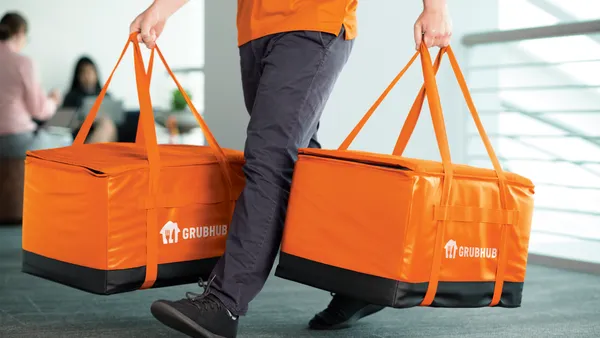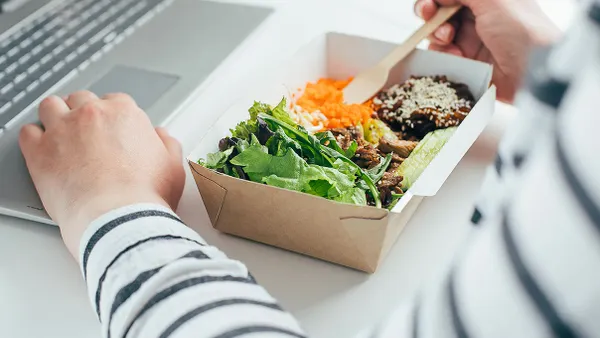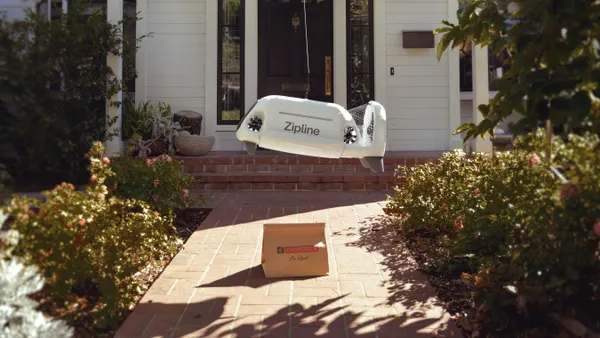Dive Brief:
- The Federal Aviation Administration (FAA) has granted Israeli dronemaker Flytrex and North Carolina-based drone services firm Causey Aviation Unmanned approval for a drone-based food delivery pilot, according to a press release emailed to Supply Chain Dive.
- The team will deliver food via drone in Holly Springs, North Carolina, as part of the FAA's UAS Integration Pilot Program (IPP) program in partnership with the North Carolina Department of Transportation and the Town of Holly Springs.
- The drones will travel along a single fixed route from a distribution center to an outdoor recreational area over mostly unpopulated areas, though the route does cross a highway. The FAA approved this route. Flytrex drones have been delivering food in Iceland in partnership with a local e-commerce site since 2017.
Dive Insight:
Flytrex is just the latest drone developer set to take flight in the U.S. food delivery market. But even though the domestic market has become crowded with third-party competitors, drone delivery is more prevalent overseas. The technology is already operating in Australia and Iceland, and NPD Group predicts that food delivery by drone will become a reality for Great Britain within the next five years.
Still, tech companies and restaurants alike are looking to the skies as a new path to differentiation. In April, Google was the first company to gain approval from the FAA for its drone technology. Uber Eats aims to begin food deliveries by drone in San Diego this summer, where tests will be overseen by the federal UAS Integration Pilot Program. The delivery giant has yet to gain FAA approval, according to Forbes.
Despite growing demand for hyper-convenient food delivery, there are still a number of obstacles companies will have to overcome before drones become a ubiquitous tool in this space. Luke Fischer, head of flight operations for Uber's urban air mobility unit Uber Elevate, told Uber Elevate conference attendees that a lack of definitive regulatory structure has been a particular issue. A lack of backyards in the urban areas has made use of this technology challenging for Uber, so the company plans to fly delivery drones to designated pickup locations where couriers can collect the food order and "solve the last 100 feet of drone delivery," Fischer said. A second option is for drones to land on top of parked Uber cars before a driver collects and transports the order to its destination.
Though drone delivery is an eye-catching way to differentiate and boost brand visibility for both restaurant brands and third-party delivery firms, it's unclear if this technology will actually save money. The FAA's approval of Flytrex signals growing industry confidence in automated drone delivery, but operators will need to quickly work out questions regarding liability, safety for human couriers collecting from the drones and where to land if they want to lead the pack.














